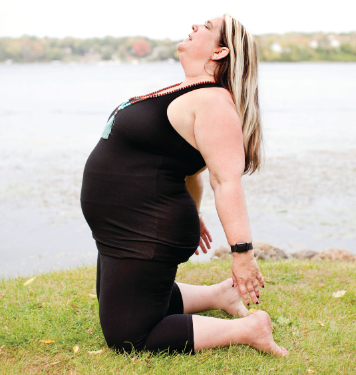by Amy Zellmer, Editor-in-chief
Yoga is a powerful tool for recovery after brain injury. Contrary to some beliefs, everyone can do yoga — you don’t need to be super flexible, be able to balance, or even be able to stand up. The beauty of yoga is every pose can be modified to accommodate anyone.
An important aspect of yoga is your breath. Connecting your breath to your body and getting oxygen flowing to your brain makes yoga powerful for recovery. Yoga also quiets the mind, letting anxiety and distracting thoughts drift away.
Camel Pose (Ustrasana) is a heart-opening backbend that helps energize.
It helps counteract the effects of sitting at a computer/phone all day, and helps to open up the heart chakra. Known to help relieve low back pain, it can help build confidence and empowerment, and improves posture.
Camel Pose stretches your abdomen, chest, shoulder, hip flexors, and quadriceps. It also strengthens your back muscles, hamstrings, and glutes.
Instructions:
- Begin on your knees with your legs hip distance apart. Keeping your hips over your knees, squeeze your thighs energetically towards each other.
- Inhale as you engage your belly, lift your sternum, and draw your elbows back behind you.
- While keeping your chest raised and core engaged, pull your shoulders back as you drop your hands towards your heels.
- Press the heels of your hands into the heels of your feet.
- Gently allow the head and neck to extend backward and gaze at the tip of your nose.
- Breathe in this pose for 30-60 seconds.
- To exit, bring your chin to your chest and hands to your hips. Engage your belly and use your hands to support your low back as you slowly come back up to your knees.
Modifications:
- Use a block next to your feet if you can not get all the way to your feet.
- You may wish to put a blanket under your knees for comfort.
- If doing chair yoga, bring your arms behind you in the chair and stretch your sternum to the sky.
Join me for monthly yoga classes via zoom for only $10 a month: www.patreon.com/amyzellmer











